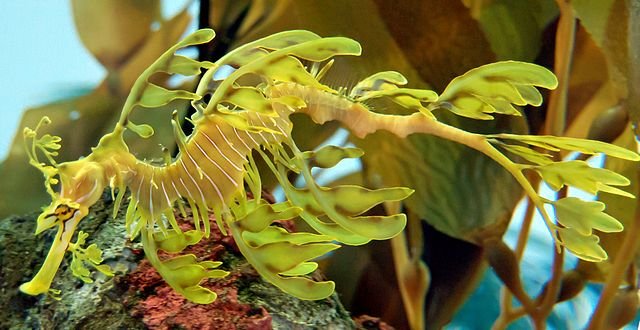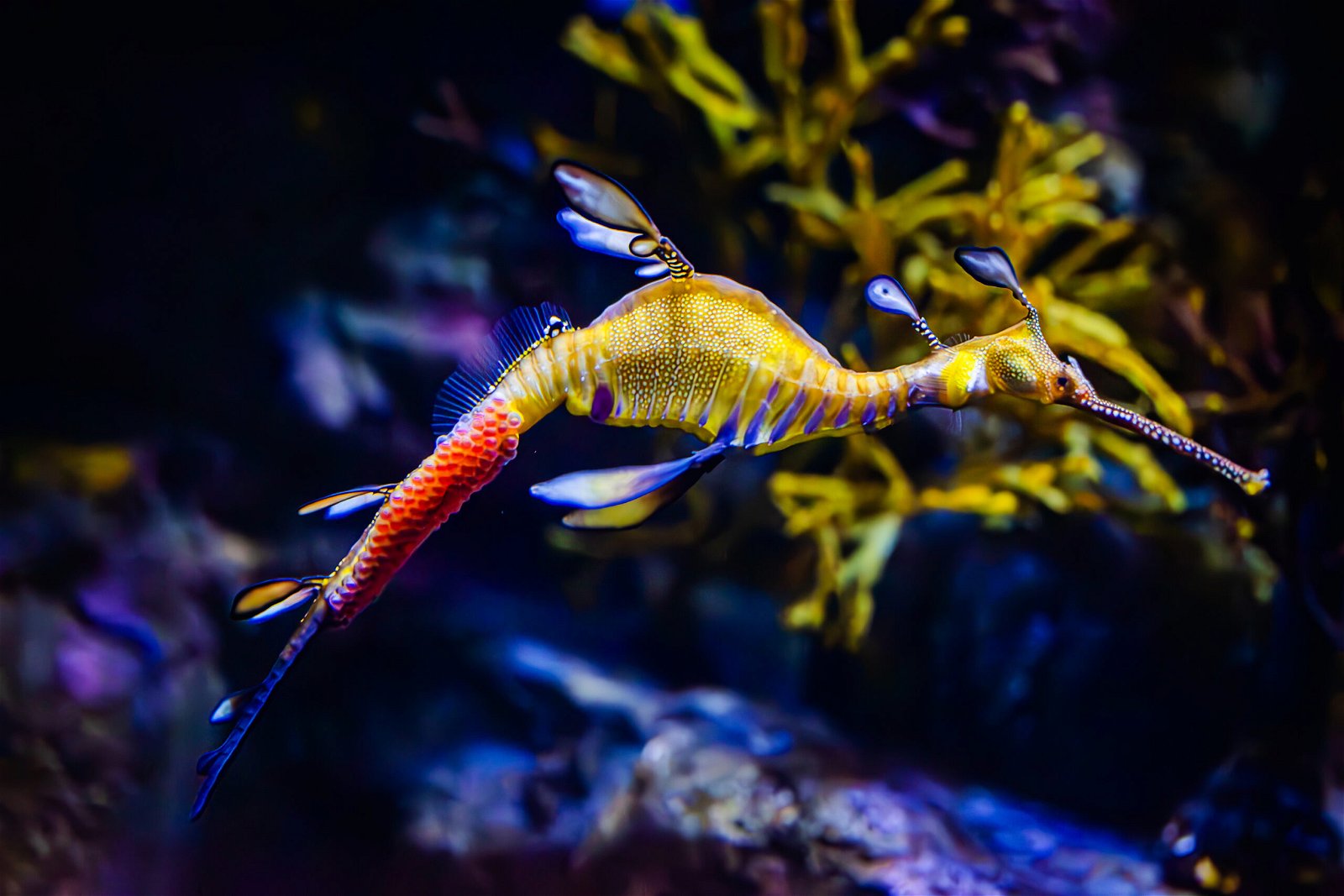While “sea dragons” have historically been recognized as unknown oceanic creatures, real seadragons are much less mysterious and more fascinating. Real seadragons are hard to track in the wild, making them challenging to study and preserve. Now, a new batch of weedy seadragons has hatched at the Birch Aquarium in California, giving scientists further insights into protecting these fascinating animals.
What are Sea Dragons?
There are three species of seadragon: the weedy (or common) seadragon, the leafy seadragon, and the most recently discovered ruby seadragon. These animals are native to the southern shores of Australia and can be found in shallower ecosystems such as reefs or kelp forests.


Because all three seadragon species lack certain biological features (such as teeth or claws), they use camouflage to avoid being attacked and eaten.
“Weedy seadragons’ unique appearance is mainly for camouflage,” Leslee Matsushige, Associate Curator at the Birch Aquarium, told The Debrief. “They blend in very well in their natural habitat, which is important because they are not able to swim very quickly to avoid possible predators. It is also important so they can sneak up on their prey and successfully capture them. Their leaf-like appendages allow them to blend in with their algae and seagrass habitats.”
Matsushige also explained that the white spotting on the seadragons’ bodies is known as “disruptive coloring” and helps them camouflage themselves further. The seadragons also use small fins to help them maneuver and find tiny organisms, like mysis shrimp, to eat.
“These fins are transparent, so they are almost invisible, even when they are fluttering and moving while the seadragon is swimming,” Matsushige added.


All three species of seadragons belong to the same biological family as sea horses and pipefish. Like these two other types of fish, seadragon males carry the eggs on their tails until the young are hatched. Because of the delicate nature of seadragon mating and the lack of in-depth information about feeding and caring for young seadragons, aquarists can find it challenging to maintain sizeable captive seadragon populations.
“Seadragons also prefer to have a larger habitat to more comfortably perform the egg transfer from female to male,” Matsushige elaborated. “This could require a very deep and wide habitat that could also be costly. The males carry the eggs on their tails for a period of approximately 7 weeks until the eggs hatch, and then the baby seadragons are on their own.”
“Many aquariums simply do not have the space or funding to provide the preferred habitat. It’s a large commitment and investment to provide the preferred feed and habitat for seadragons,” Matsushige said.
For Matsushige and her team, this new successful hatching of seadragons reveals that the investment in their breeding program has paid off.
The Need for Captive Breeding Programs
As it is difficult for scientists to track native seadragon populations accurately, captive breeding programs like that at the Birch Aquarium can help maintain aquarium populations that scientists can study more closely and, in the process, learn more about seadragon development, which they can pass on to other breeding programs. Matsushige explained that many aquaria have found similar difficulties in feeding the young seadragons, making it difficult to rear up the next generation of animals.
“Since we are still learning how to best keep them healthy in human care, there have been difficulties with their husbandry,” said Matsushige. “One difficulty is providing proper nutrition, which is key to a healthy seadragon, but acquiring the appropriate food can be challenging and costly. Seadragons mainly prefer to feed on mysis shrimp. Mysis shrimp can be fed frozen, which is more cost-effective and easier to acquire, but the freezing process itself could also mean there is a loss of vital vitamins and nutrients. Live mysis shrimp is more nutritious but costly and more difficult to acquire. The live shrimp also need to be fed very often— at least one to two times per day.”
Looking at Wild Populations
According to the International Union for Conservation of Nature (IUCN), the weedy sea dragon population is decreasing. However, because of these animals’ camouflage abilities, it’s difficult for scientists to monitor their populations. Instead, they collaborate with citizen scientists such as fishermen and underwater photographers to try to track these animals.
“Scientists in Australia and here at Scripps Oceanography are currently studying the distribution of seadragons in Australia and how closely related they are to each other,” explained Matsushige. “They are also monitoring the population densities there using photos submitted by citizen scientists taken in different geographic areas around Australia. There are many threats to the seadragon habitats due to overfishing, pollution, coastal runoff and sedimentation, with ocean temperature changes affecting the density of the seagrass and algae. These studies can better inform management of these coastal habitats by the government agencies to protect the seadragons.”
Kenna Hughes-Castleberry is the Science Communicator at JILA (a world-leading physics research institute) and a science writer at The Debrief. Follow and connect with her on X or contact her via email at kenna@thedebrief.org

